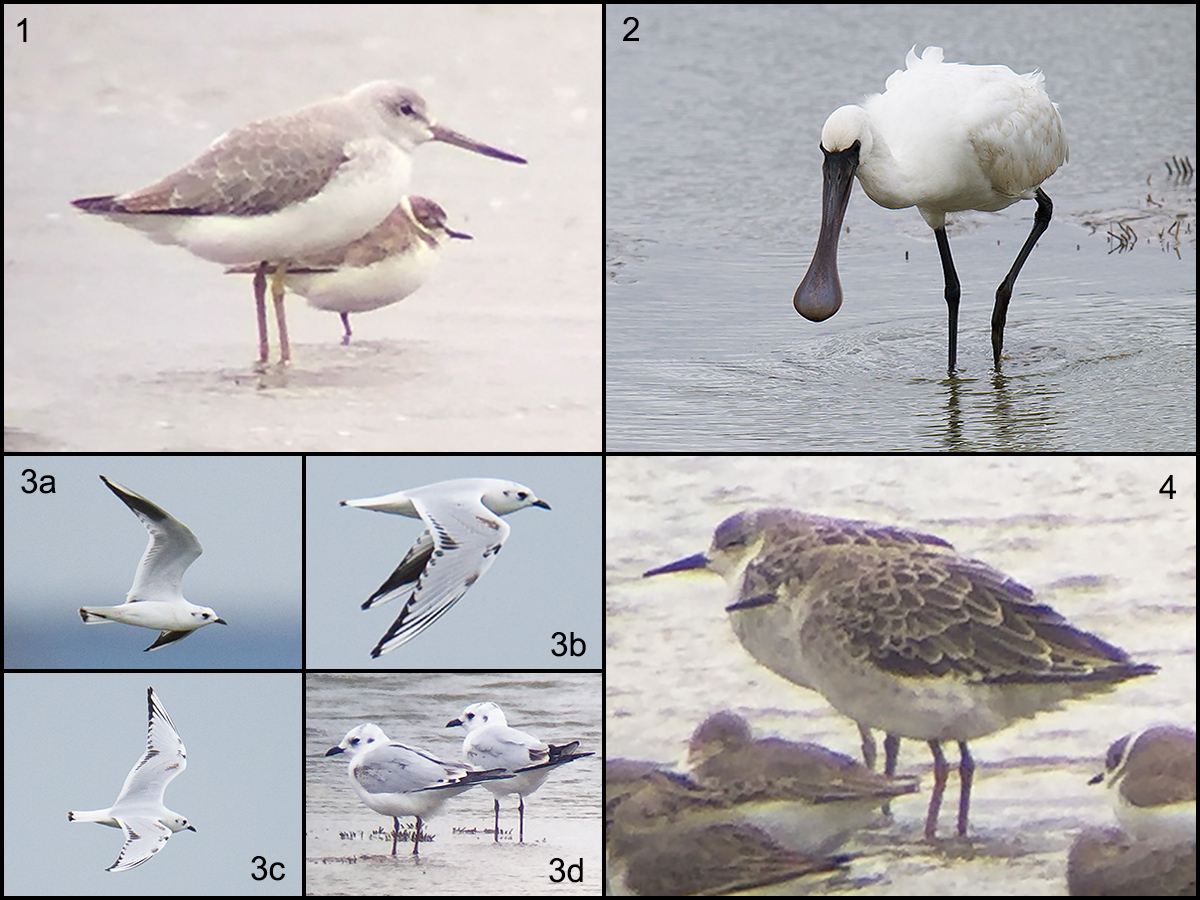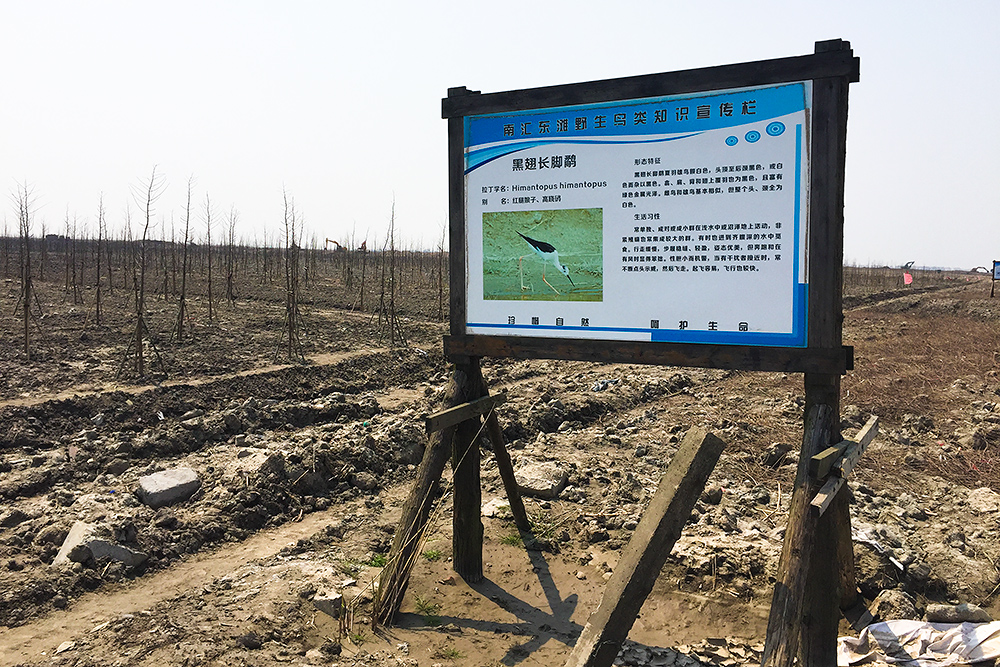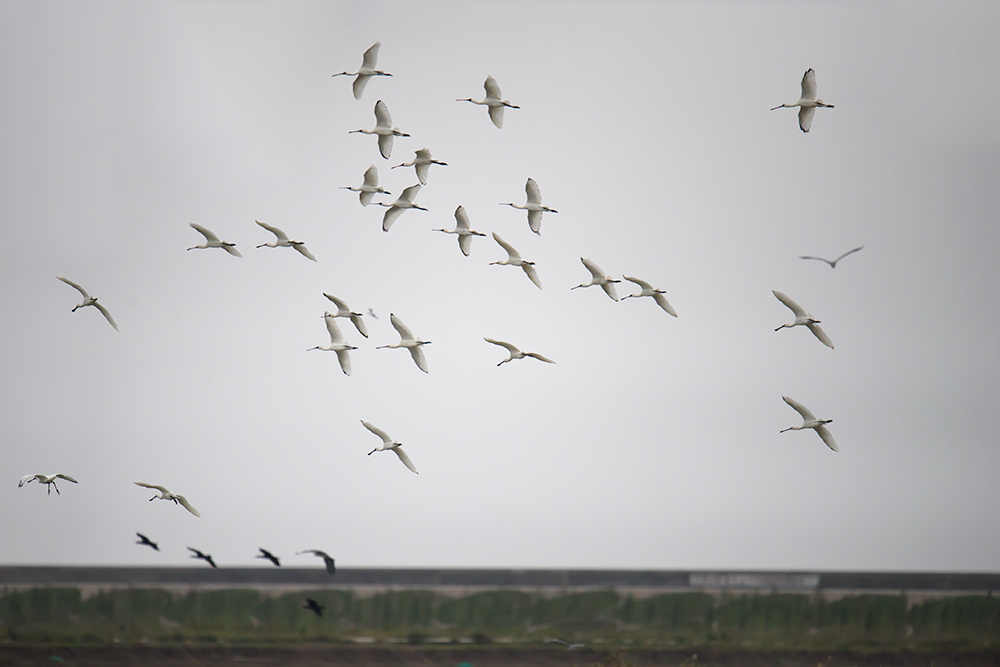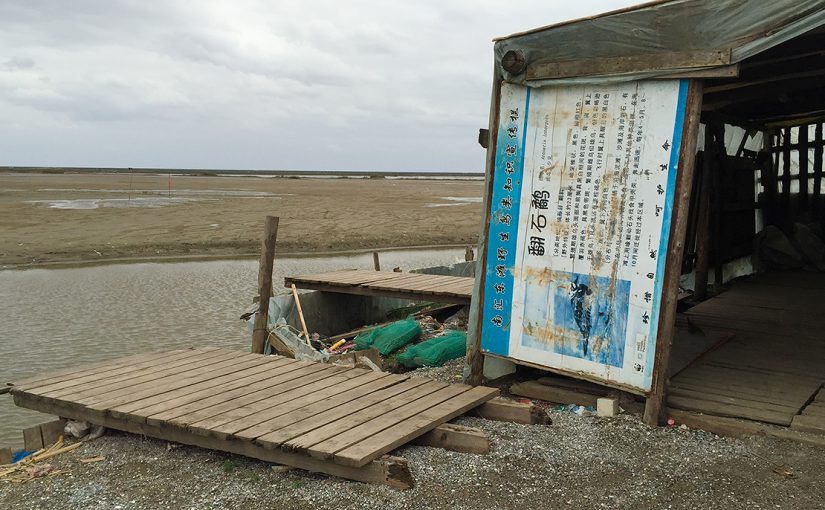The photo leading off this post shows an abandoned sign introducing Ruddy Turnstone that has been turned into a wall of a shack in the abandoned nature reserve at Nanhui. On 29 Oct. 2016 in the marshy land just behind the sign were 54 Endangered Black-faced Spoonbill, an Endangered Nordmann’s Greenshank, a Near Threatened Red Knot, 2 Vulnerable Saunders’s Gull, and a score of other species. In the essay below, I argue that the defunct nature reserve at Nanhui should be brought back to life and converted into a world-class wetland, like Sungei Buloh in Singapore. — Craig Brelsford
by Craig Brelsford
Founder, shanghaibirding.com
I like to extol the city in which I have spent the past nine years. I like to tell people about the green side of Shanghai, the city at the mouth of Asia’s greatest river and on Earth’s greatest migratory flyway. How exciting it is to bird in Earth’s largest city.
I see in Shanghai an opportunity to show the rest of China how to cherish its natural heritage. The people of Shanghai can teach China and the world to view nature as an asset. They can do this by creating an easily accessible wetland reserve at Nanhui.
Shanghai already is an environmental leader, in a way. My wife Elaine Du and I have toured the 330 km (205 mi.) stretch of coast from Nanhui to Yancheng in Jiangsu. Remaining mudflats and wetlands are very few—and some of the best are not those found in the less-populated areas but those found in the megalopolis of Shanghai. Eastern Chongming Island enjoys considerable protection, and there is Jiuduansha (31.166667, 121.925000), intertidal wetland shoals in the sea near Pudong Airport.

The problem with Jiuduansha especially and to a lesser extent Chongming Dongtan is that they are not easily accessible. The next step for Shanghai is a nature reserve easily accessed by the people, along the lines of the Mai Po Marshes in Hong Kong and Sungei Buloh in Singapore.
It is amazing to me that such a reserve was not in the master plans for Pudong when the New Area was conceived. Pudong is big—it covers 1210 sq. km (467 sq. mi.), nearly twice the size of Singapore. Within this New Area you have the world-class urban architecture and business districts around Lujiazui, you now have world-class family entertainment at the Shanghai Disney Resort—and you have world-class wildlife, the natural inheritance of the city, waiting on the coast, ready to be preserved, experienced, and loved. There is moreover the example of other Asian megacities such as the aforementioned two that found room for wildlife—and that wear their urban reserves as a badge of civic pride.

Mai Po and Sungei Buloh are easily reachable by bus. In Shanghai, the Metro already reaches Lingang New City, and a cheap, fast taxi ride gets you from Dishui Lake Station to Nanhui’s abandoned wetland reserve 8 km away (at 30.920507, 121.973159). The infrastructure for an accessible “people’s nature reserve” is in place, and the birds are there at Nanhui, crying out for real, lasting protection.
Sungei Buloh is a particularly good example for Pudong, as Sungei Buloh is about the same size (1.3 sq. km) as the defunct nature reserve at Nanhui (1.2 sq. km). Like Nanhui’s defunct reserve, Sungei Buloh was not originally considered a likely place for a nature reserve. Sungei Buloh was willed into being by the actions of local nature lovers who understood the value of the site. Likewise, a change of heart and an act of will can bring the abandoned reserve at Nanhui back from the brink.
The sight of Nanhui’s defunct reserve, which apparently just missed being dredged and drained this year, and which could well be torn up next year, saddens me—not just because of the endangered Black-faced Spoonbill that so obviously rely on the place, and not only for the endangered Nordmann’s Greenshank that has been living there—but also for the grandchildren of the people currently making the decisions, who may have these treasures denied them, and who may fail to appreciate the natural heritage of this great city.
The development plans for Pudong in general and Nanhui and Lingang New City in particular need to have a major component dedicated to conservation. Jiuduansha is simply not enough for Pudong. Those mud banks, barely above sea level, are a place for researchers, not the public. To meet the standard set by other coastal megacities, Pudong needs an easily accessible nature reserve on its mainland. That defunct nature reserve is just the place.

I think some local people realize the dire situation at Nanhui, and I understand that local birders had much to do with the one-year stay of execution granted the abandoned nature reserve. Those birders deserve everyone’s thanks.
I think I speak for many foreigners when I say to my Shanghai conservationist friends: If you need our support, then we will give it to you. Ideas, a pat on the back, anything—we’re here. 加油!


I am from Singapore. I am proud that Sungei Buloh Wetland Reserve is mentioned in the article as a good example of conservation efforts initiated by a civil society group (the forerunner of Nature Society Singapore) and accepted and adopted by the authorities in the late 80’s and early 90’s. Wetlands like Nanhui, Mai Po and Sungei Buloh lie on the East-Asia Australasia flyway, and are important places for the birds to rest / recharge themselves during their long migration journeys. Unfortunately, many wetland areas are disappearing due to mindless “development.” The beauty of areas like Sungei Buloh, Mai Po, and Nanhui is that they are so accessible, and can co-exist near megacities, if they are properly managed.
That said, Sungei Buloh is only one type of habitat (mainly mangrove forests and mudflats) suitable mainly to the waders or shorebirds. Some people in Singapore think that since we have Sungei Buloh, we need not worry about conserving other habitats. There are many forest birds such as flycatchers, pittas, etc, which do not visit Sungai Buloh during their migrations. We find them in the remaining (and dwindling) patches of forests in Singapore. We have just lost one such place (the former Bidadari cemetery) where public housing is being built. Somehow, we need to reconcile nature conservation with the needs of people in a densely populated city state–a not impossible, but by no means easy, task.
Thank you for your comment! You make an essential point: “The beauty of areas like Sungei Buloh, Mai Po, and Nanhui is that they are so accessible, and can co-exist near megacities, if they are properly managed.”
I live in Shanghai. How can I help? Peter